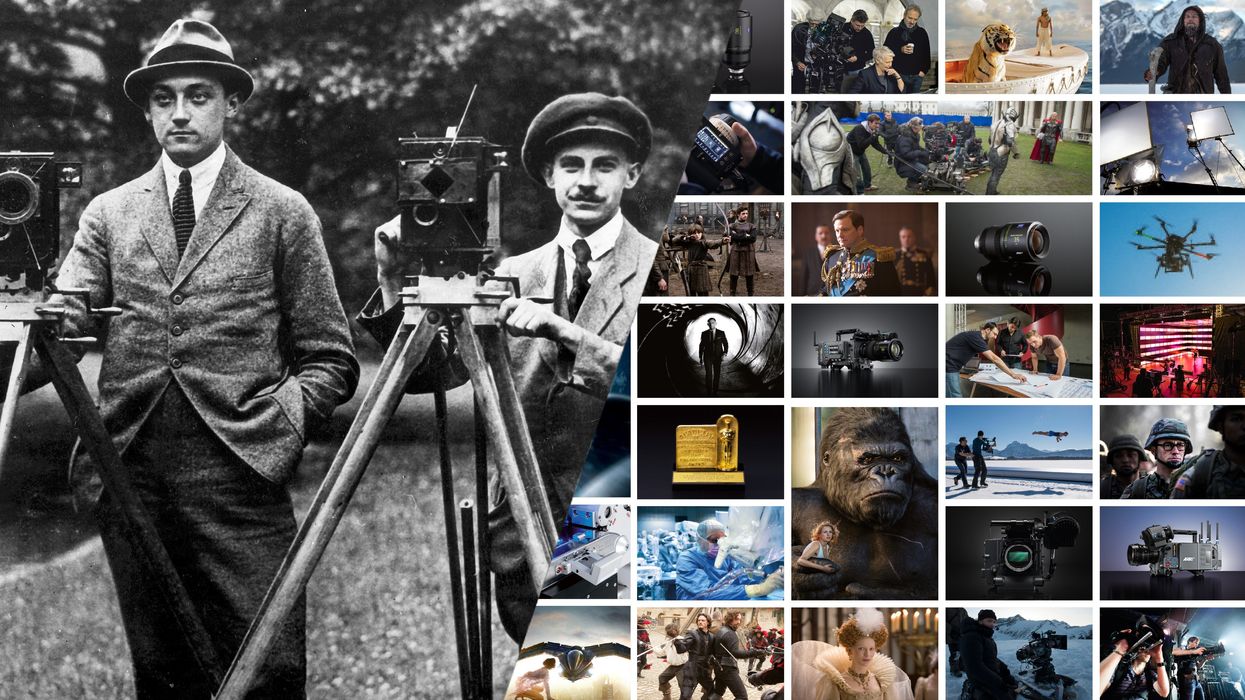Celebrate 100 Years of ARRI with Exclusive Videos of Wim Wenders, Ang Lee, Reed Morano & More
Watch how a company in Munich changed they way filmmakers treat story.

ARRI is celebrating its 100th anniversary this month, and it's staggering to think the company has been around for a century. Best known for its camera technology, many of the renowned cinematographers–Laszlo Kovacs, Roger Deakins, Emmanuel Lubezki, Seamus McGarvey, Janusz Kaminski–who we study and write about on No Film School look to the German brand for visual storytelling tools.
Founded in September 1917 by two teenaged filmmakers, August Arnold and Robert Richter, ARRI derived from using the first two letters of their surnames. When they weren't shooting their own films, they started manufacturing and renting out their own gear as well as developing film in labs. Then in 1924, the KINNARRI 35 was born, a hand-cranked camera that used 100 feet of 35mm film. ARRI also had its hands in lighting very early on, making mobile lighting that same year.
It was the introduction of the ARRIFLEX 35 in 1937 and later the ARRIFLEX 35 II series that started turning heads. Stanley Kubrick used the latter for A Clockwork Orange, cinematographer William Fraker looked to it on Peter Yate's Bullitt, cinematographer Laszlo Kovacs on Easy Rider, cinematographer Vilmos Zsigmond on Deliverance... the list goes on. The camera eventually won the 1966 Scientific and Engineering Award from the Academy, the first of many for the company.
Today, as we all know, ARRI is involved in many facets of filmmaking—cameras, lighting, accessories, education—and since the rise of the ALEXA in 2010, it's been a part of every Oscar-winning film the last five years.
To mark the occasion, ARRI has created a historical timeline and a series of over 100 interviews with cinema luminaries that are absolutely worth watching. Especially the story of Arnold and Richter, ARRI's early developments and educational stunts or the ARRIFLEX during WWII.
From the early years of ARRI's inception to hearing from iconic cinematographers about their techniques, one could spend days absorbing all the free knowledge. Here are a few of our favorite insights:
Wim Wenders, director:
“My mother always hoped that I’d come to my senses one day and become a doctor. Even after I’d made my first three films, she kept asking: ‘Tell me Wim, how much longer are you going to keep on doing this? Don’t you want to learn a proper trade?’”
Reed Morano, ASC, director/DP:
"Every cinematographer who likes to operate will agree that you become a character in the scene. So you are just acting along with the actors; you are reacting off of them a lot of the time. To me, getting up in it and being part of it is so much fun.”
Stefan Arndt, producer:
Ed Lachman ASC, DP
“The photographic image for me isn’t just a representational image. It’s about finding the poetic or psychological truth of the image, and that is what I’m always searching for with directors–how you tell a story and find the interior world of the character.”
While we haven't heard any rumors about new gear, ARRI will be hosting a special event today. If anything exciting is introduced we'll let you know about it.
Source: ARRI 100th











